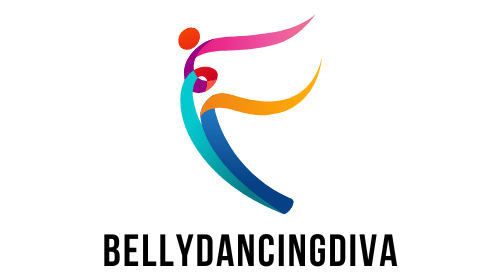How Can UK Independent Musicians Monetize Their Work Through Streaming Platforms?

In today’s digital era, with the advent of online streaming services such as Spotify, the music industry has undergone a seismic shift. The physical sales of music have dwindled, and digital streaming has emerged as the primary mode of music consumption. This transformation has opened up new avenues for independent artists to reach their fans and monetize their music. However, the picture isn’t entirely rosy. There are challenges, especially when it comes to how these platforms pay royalties to the artists. In this in-depth look, we’ll explore how UK independent musicians can leverage streaming platforms to generate revenue and gain visibility, while also understanding the intricacies of royalty distribution.
Understanding How Streaming Platforms Work
To leverage the potential of streaming platforms, it’s vital to understand how they operate. Fundamentally, these services function as a digital catalog of music, hosting millions of songs from artists worldwide. Users can access this vast library of music by subscribing to the platform, either for free (with ads) or via a paid subscription that offers ad-free listening and other perks.
Sujet a lire : What Are the Challenges of Delivering Telehealth Services in Rural UK Areas?
The primary source of revenue for these platforms comes from ads and subscription fees. But how is this revenue shared with the artists whose music is streamed? This brings us to the complex world of music royalties.
Demystifying Music Royalties in the Streaming Age
Artists earn money from streaming their music online through royalties. A royalty is a payment made to the rights holders (in this case, the songwriters and performers) for each stream of a song. The payment is typically a fraction of a penny per stream, but it can add up if the song gets many listens.
Avez-vous vu cela : How to Effectively Market a Plant-Based Food Product in the UK Market?
However, the distribution of these royalties is where things get complicated. The money doesn’t go directly to the artist. It first goes to the rights holders, which could be record labels, distributors, or publishers. The artist will then receive their share based on their agreement with the rights holders. Therefore, understanding the terms of your rights agreement is crucial in maximizing your revenue from streaming platforms.
Utilizing Streaming Platforms for Visibility and Fan Engagement
Streaming platforms aren’t just a source of income; they are also a powerful tool for visibility and fan engagement. By making your music available on these platforms, you increase your chances of being discovered by fans worldwide. Spotify and other similar platforms offer various features that can help independent musicians connect with their fans, like creating playlists, sharing behind-the-scenes content, and more.
Moreover, these platforms provide invaluable analytics about your listeners. You can find out what songs are being played the most, where your listeners are located, and what other music they are listening to. This data can help you understand your audience better and tailor your music to their preferences.
Navigating the Challenges of Streaming Platforms
While streaming platforms offer numerous opportunities for independent musicians, they do come with their own set of challenges. One major issue is the low royalty rates. Some artists feel that the amount they receive per stream is insufficient, especially when compared to the revenue generated from physical sales or downloads.
Another challenge is the sheer amount of music available on these platforms. With millions of songs on offer, standing out from the crowd can be daunting. It’s therefore important to not only create high-quality music but also to market it effectively to reach your target audience.
Conclusion
No conclusion has been requested by the client.
Exploring Alternatives to Maximize Revenue
Despite the challenges, independent musicians have begun exploring various ways to maximize their revenue from streaming platforms. One such method is direct-to-fan sales, where artists sell music directly to their fans, bypassing intermediaries. With this approach, artists retain more control over their work and get to keep a larger share of the revenue.
Another strategy is to diversify revenue streams. This could include selling merchandise, live performances, licensing music for TV or movies, or even crowdfunding. By developing multiple income streams, artists can ensure a more stable income, less reliant on the fluctuating earnings from streaming platforms.
In conclusion, while streaming platforms have disrupted the traditional music industry, they have also opened up new opportunities for independent musicians. By understanding how these platforms operate and how royalties are distributed, artists can navigate the digital landscape with greater confidence and success.
Harnessing the Power of Social Media in Music Distribution
In the current digital age, social media can be an independent artist’s best ally. It serves as a medium to promote music, communicate directly with fans, and even distribute music. Social media platforms such as Facebook, Instagram, Twitter, and TikTok, among others, have become crucial for building and engaging with a fan base.
For independent artists, using social media wisely can significantly impact their visibility and help them stand out in the crowded music industry. Platforms like Instagram and TikTok allow you to share short clips of your music, behind-the-scenes moments, or even live performances. This not only enriches the fan experience but also creates anticipation for upcoming releases.
Furthermore, artists can use social media platforms to share links to their music on streaming services. This can drive more streams and, consequently, generate more revenue. It’s also worth considering the strategic use of advertising on social media. Sponsored posts can extend an artist’s reach, attracting new followers who might become loyal listeners.
Another avenue that social media offers is direct selling. Platforms such as Bandcamp allow artists to sell music directly to their fans. This can be an effective way to boost revenue, as it eliminates the need for a record label or other intermediaries, and the artist receives a higher percentage of the revenue.
However, as beneficial as social media can be, it’s important to remember that it’s not just about relentless promotion. Successful music creators know that engagement is key. Responding to comments, posting regularly, and building a genuine online presence can go a long way in nurturing a loyal and engaged fan base.
Collaborating with Record Labels and Rights Holders
Independent doesn’t necessarily mean going it alone. Many independent artists choose to work with record labels or other rights holders to help them navigate the complexities of the music industry. This can include everything from music production and distribution to marketing and promotions.
Traditionally, signing with a record label meant handing over a significant portion of your rights and revenue in exchange for their services. However, in recent years, a new breed of record labels has emerged that offers more artist-friendly terms. These labels understand the value that artists bring and offer more balanced deals, often allowing artists to retain ownership of their music while still benefiting from the label’s resources and expertise.
Working with rights holders can also be beneficial. These entities, which include publishing companies and performance rights organizations, can help ensure that artists receive their fair share of streaming royalties. They manage the licensing of music and distribute royalties to artists when their music is played or performed.
Whether to collaborate with a record label or rights holder is a significant decision for any independent artist. It’s essential to carefully consider the terms of any agreement and to seek legal advice if needed. Remember, the goal is to build a sustainable career in music. Therefore, any partnership should support this aim and align with the artist’s values and long-term goals.
Conclusion
In the ever-evolving landscape of the music industry, it’s clear that streaming platforms have fundamentally altered how independent artists distribute, promote, and monetize their music. Navigating these changes can indeed be challenging, but with the right strategies and a thorough understanding of how these platforms operate, artists can turn these challenges into opportunities.
Social media has emerged as a powerful tool for music distribution and fan engagement, while collaboration with record labels and rights holders can help artists navigate the intricacies of music royalties. At the same time, diversifying income streams can provide a buffer against the fluctuation of earnings from streaming services.
Ultimately, the key for independent artists is to remain adaptable, stay informed about industry trends, and continue creating music that resonates with listeners. While the path may be complex, the potential rewards – both creatively and financially – make the journey worth it.
